May 2024
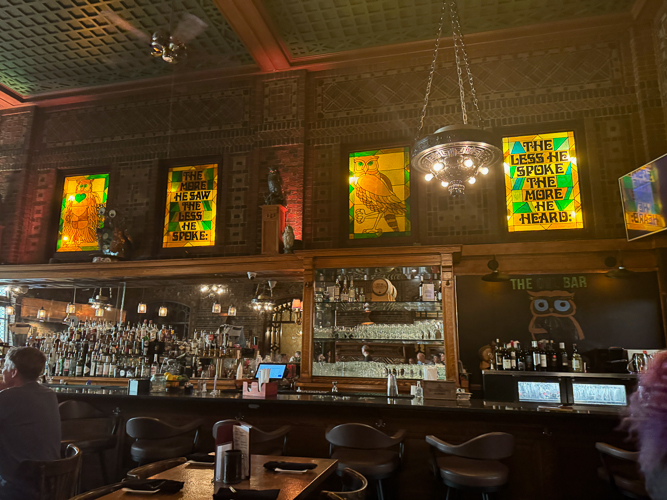
The Owl Bar – The complete poem over the bar reads: A wise old owl sat in an oak. The more he saw, the less he spoke. The less he spoke, the more he heard. Why can’t we all be like that wise old bird?
Prohibition began on January 17, 1920, and for the next 13 years, the bar operated as a speakeasy.
At the time, owner Colonel Consolvo placed two large plaster owl statues on the cash registers. The owls were named Sherry Belle and John Eager Howard, and they had electric glass eyes that signaled the availability of contraband whiskey. An amber eye on each owl would blink when the hotel’s basement had liquor, and the coast was clear of law enforcement. When Prohibition ended in 1933, the owls mysteriously disappeared.
The bar fell on hard times and went through many owners. However, in 1976, Victor Frenkil bought the property at auction and restored it to its former glory.
Frenkil’s friend found the original owls in New York, and late one night in April 1977, they mysteriously reappeared in the locked bar with a new poem:
Where we’ve been, what we’ve seen No matter the din, no one will glean. But if your eyes are clear today, you can tell The Owls of Belvedere—have returned from Hell!
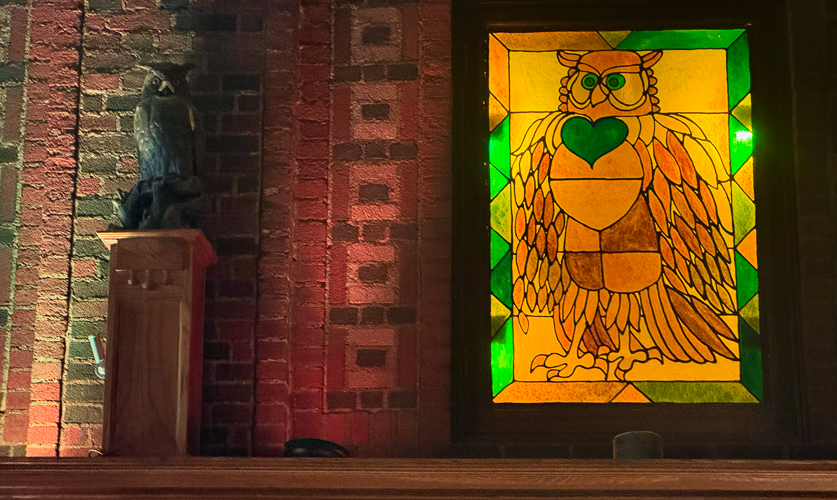
One of The Owl Bar’s original owls on the left.
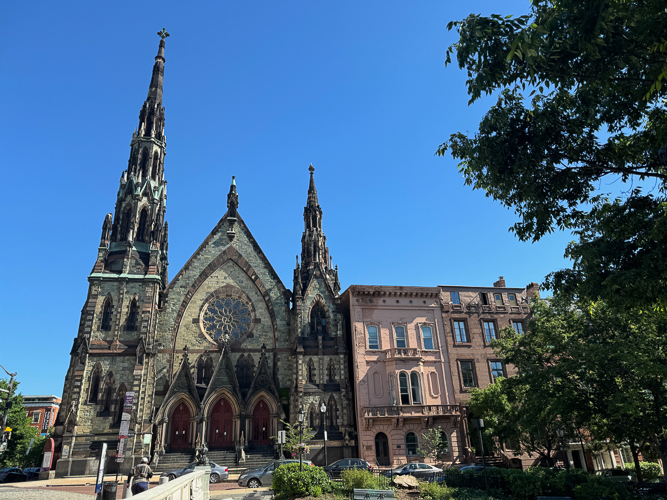
United Methodist Church of Mount Vernon
The United Methodist Church “is one of the most photographed buildings in Baltimore. It sits near the Washington Monument on the site where Francis Scott Key died in 1843. Its sanctuary seats 900, and its rose window resembles the one in the Notre Dame Cathedral in Paris.
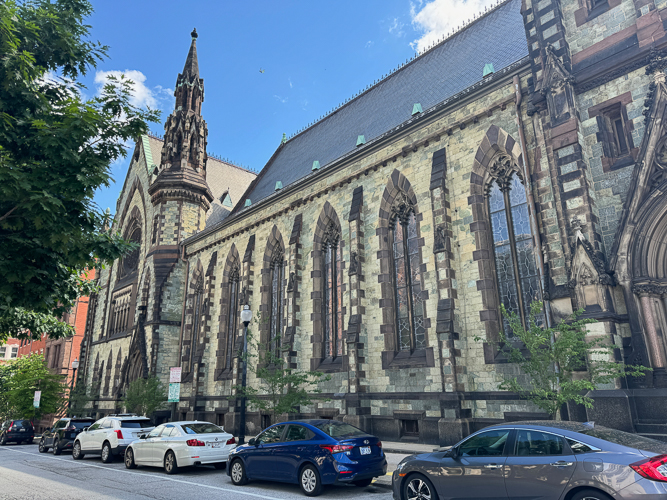
The church is a Norman-Gothic-style church that was completed in 1872. It was designed by Thomas Dixon, a Baltimore architect, and is built of blocks of a green-toned Maryland fieldstone with brownstone ornamentation. It features three spires.
Evergreen Museum & Library .
Evergreen is operated by Johns Hopkins University. It was built in the mid-19th century and bought in 1878 by the president of the Baltimore and Ohio Railroad, John W. Garrett. It is a 48-room mansion with a 23-karat gold plated bathroom, a 30,000-book library, and a theatre painted by famous Russian artist Léon Bakst.
I will admit the home did not really impress me. This was primarily because, like so many house museums given to Universities, it wasn’t in the greatest shape. The library, however, was impressive in its number of rare collectible books.
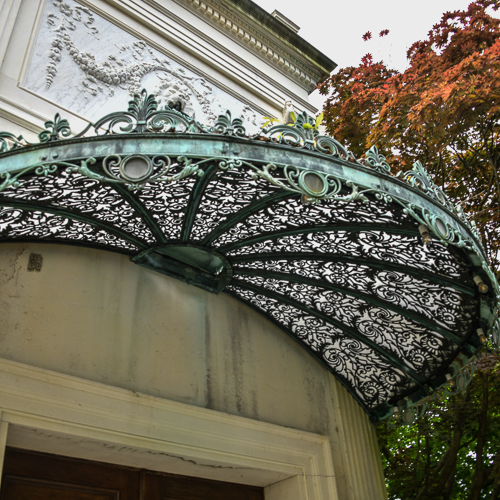
*
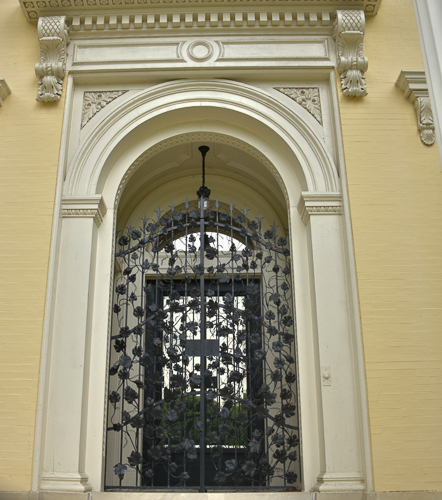
What did catch my eye were the Tiffany canopy and the Tiffany front door.
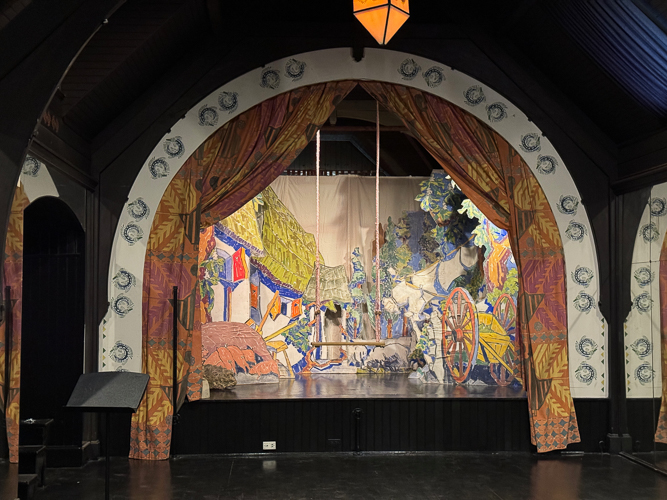
The theater painted by Russian artist Léon Bakst.
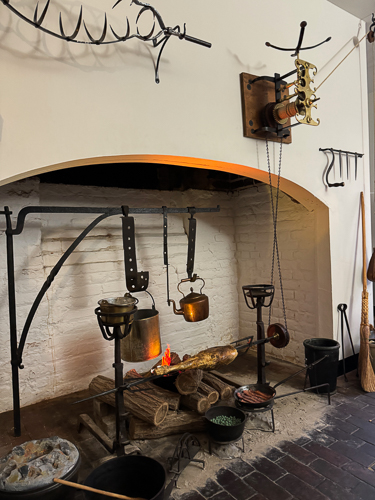
This amazing gadget was in the kitchen of a house museum in Annapolis. The x-shaped bowl on top of the goldish contraption on the hearth holds a bowl you fill with water. It slowly drips and causes the chain to move, continuously rotating the spit hands-free.
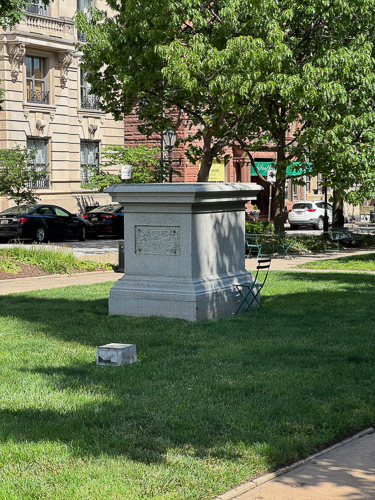
An empty plinth in a park in the Mount Vernon Neighborhood
This plinth once held a statue of Roger Taney. It is one of many Confederate statues removed from their locations across the country. Taney is most famous for his decision in the Dred Scott case, which advanced slavery in America and is tied to the Confederate cause. Taney served as the chief justice of the Supreme Court for nearly 30 years, beginning in 1836. During that time, Taney oversaw the ruling of the Dred Scott decision that stated that African Americans could not be considered citizens and, by extension, could still be considered property even if they were in a free state.
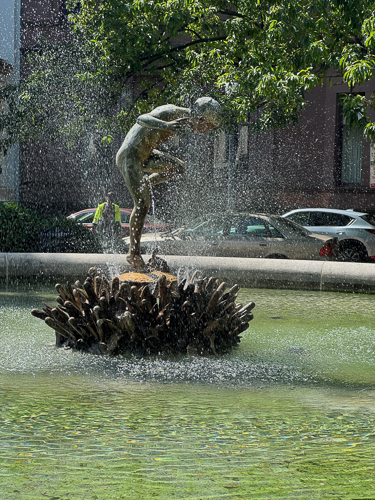
*
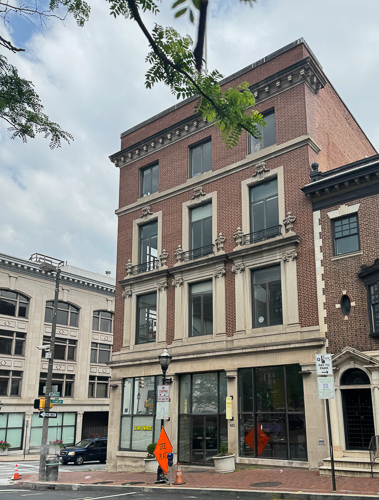
Random Architecture
I found this building interesting because of its 1/2 urn ornamentation, not something I have seen before.
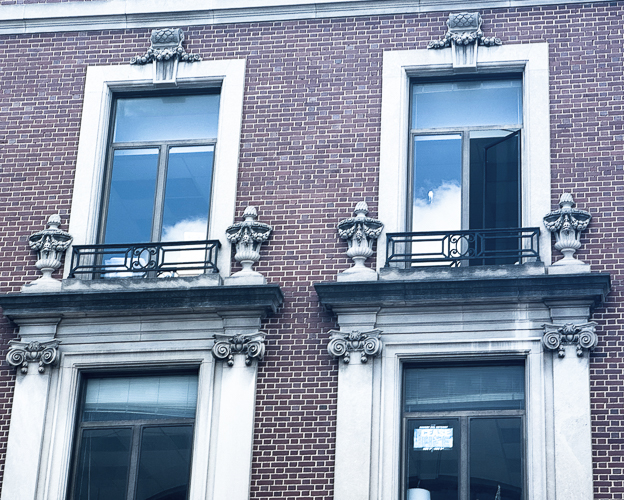
Other interesting buildings in Baltimore caught my eye.
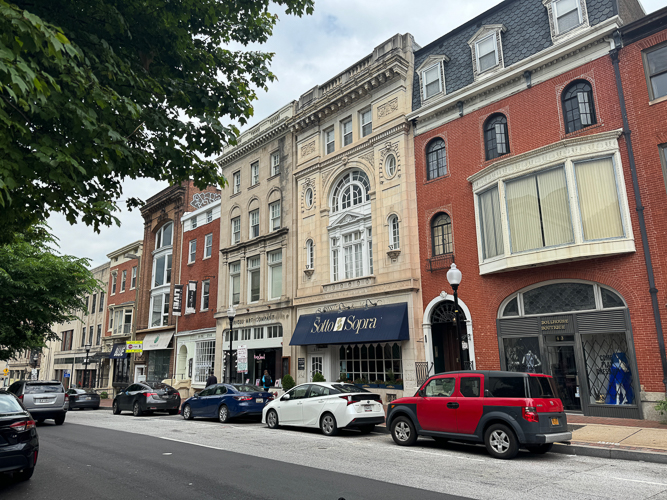 *
*